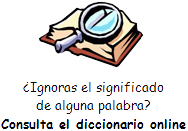|
Food in our daily lives
While thinking of the most useful expressions, food and eating were the
first ideas that came to mind.
Americans not only plan daily activities around the weather, but they
also plan their days around a meal. We call a meal in the morning,
breakfast, and around noon, lunch. A meal in the evening is called
dinner. And on the weekend, we sometimes have a late breakfast or an
early lunch. So, we call it brunch!
We may cook our food, take fast food home, or choose to eat out at a
restaurant. But there are a few phrases that we use to talk about eating
and drinking. Let us look at several of these now!
Introductory questions for eating
Are you hungry?
Have you eaten yet?
Do you want to go to lunch?
What’s for dinner?
These questions are often used to start a conversation about food and
eating. Now, let’s look at:
Are you hungry?
We ask this question to see if someone is wanting to eat. The person
asking the question may be hungry, themselves. The answer to this
question is either a “yes” or “no” and maybe a reason why. For example:
Yes, I’m so hungry! Let’s get some takeout!
No, I’m not hungry yet. Let’s wait for dinner.
This is also a “yes” or “no” question. But we use the present perfect
tense in this question and the adverb “yet” to talk about the recent
past. The structure for the question is: An auxiliary or helping verb
(be, do, or have) + subject + main verb (past participle).
Have you eaten yet?
The answer to this question can be in the past tense or the present
perfect:
Yes, I ate.
Yes, I have just eaten.
No, I haven’t eaten anything yet.

Do you want to go to lunch?
The question is really an invitation to someone to have a meal with you,
usually at a restaurant, café, or a fast-food place.
What’s for dinner?
This question is structured differently from a “yes” or “no” question.
The structure here is: What + auxiliary verb or helping verb (be, do, or
have) + subject (+main verb).
Here, the questioner believes that the person answering the question has
already cooked or prepared the meal. The questioner is asking about the
food being served.
Offering drinks
Other questions can be used during a meal, either at home or at a
restaurant. If you offer someone a drink, you can ask:
Would you like a drink?
What do you want to drink?
How about some coffee or tea?
Would you like a drink?
Using “Would you like” to start a question is a polite and more formal
way to ask if someone wants to have a drink. If you know the person well
enough, you might want to use:
Do you want a drink?
What do you want to drink?
And for a close friend, you can even suggest a drink by saying:
How about some coffee, water, beer...?
The structure for a “how about” phrase is: How about + subject + noun or
simple verb.
We can also use a gerund within the structure as well, like in this
example:
How about grabbing a drink later?
At the end of a meal
And lastly, when we are eating out at a restaurant and it is the end of
the meal, we have two important questions:
Do you want to split the bill, check, or tab?
How much should we tip?
The first question is a “yes” or “no” question for splitting the bill or
the total cost of the meal. In the United States, it is a common
practice for individuals to pay for their own meal at a restaurant
unless someone else offers to pay. This is called “splitting the bill.”
The second question refers to the practice of tipping in America. The
tip is a little extra money on top of the bill for food and drinks to
pay for services from the food server or bartender at a restaurant. The
amount could be anywhere from 15 percent to 20 percent of the total
bill.
Closing thoughts
Today, we learned some common questions that we use to talk about
eating.
When offering someone a drink, you can use the structure “would… like”
in more formal settings, and the verb “want” for informal ones. “How
much” questions can be used to talk about the price of a meal or the
cost of tipping. |
![]() ).
Utiliza el botón derecho del ratón y "guardar enlace" para descargar el
fichero a tu PC, tablet, Smartphone, etc.
).
Utiliza el botón derecho del ratón y "guardar enlace" para descargar el
fichero a tu PC, tablet, Smartphone, etc.![]() Escucha el audio
Escucha el audio



